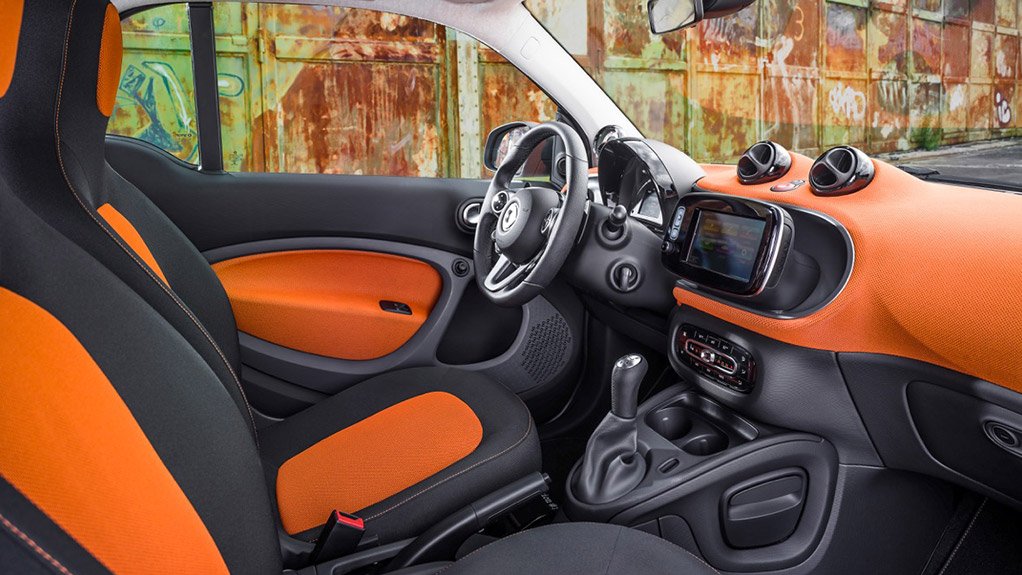Biometrics revolution will render car keys obsolete by 2025, says study
By 2025, advancements in biometrics will radically transform the driving experience; health, wellness and wellbeing of the driver and the security of vehicles.
This is the key finding of Frost & Sullivan’s ‘Biometrics in the Global Automotive Industry, 2016–2025 analysis’.
According to the study, one in three new passenger vehicles will feature one or more biometric features by 2025, such as fingerprint recognition, iris recognition, voice recognition, gesture recognition, heart beat monitoring, brain wave monitoring, stress detection, fatigue monitoring, eyelid monitoring, facial monitoring and pulse detection.
These will be driven by built-in, brought-in and cloud-enabled technologies.
Brought-in biometrics will play a key role in the future of in-car health, wellness and wellbeing monitoring. Built-in biometric technologies will primarily drive advanced driver-assistance systems and vehicle security, and cloud analytics will generate actionable insights and send notifications during emergencies.
Biometrics in vehicles are expected to show a compound annual growth rate of 38.3% up to 2025.
Brave New World
The Frost & Sullivan study found that the cars of the future will use biometrics to authenticate an individual, as well as to identify individual behaviour patterns.
The data will, for example, be used to automatically adjust the car’s seat height, steering position and rearview mirror, as well as play favourite music and retrieve health records. Behaviour patterns of multiple users can be stored.
Biometrics such as fingerprints, palm vein, facial recognition and heartbeat detection will be used for vehicle security.
These features will be used for secure vehicle entry and for ignition authentication, which will render the traditional car key obsolete by 2025 – meaning if your kids don’t know what a postage stamp is, it is likely theirs won’t know about the existence of car keys.
Major automotive original equipment manufacturers (OEMs, or car manufacturers) and Tier 1 suppliers (major component suppliers) must stay abreast of technologies, business models, and regulations shaping the automotive biometrics ecosystem, advises the Frost & Sullivan study.
“Partnerships between automotive OEMs and wearables companies will result in faster penetration of biometrics within the automotive industry, allowing OEMs to save on biometrics related research and development expenditure, while creating growth avenues for wearables companies,” believes Frost & Sullivan Intelligent Mobility industry analyst Joe Praveen Vijayakumar.
New business models within the automotive industry, such as device-as-a-service and health-as-a-service, will also emerge.
“Urbanisation will continue to fuel the emphasis on biometrics driven advanced driver assistance system features to navigate heavy traffic, while ensuring safety and comfort,” adds Vijayakumar.
“However, customer concerns surrounding the safety of the sensitive data collected through biometrics will compel suppliers to also invest in cybersecurity measures to build credibility and increase growth.”
The Frost & Sullivan study found that OEMs and suppliers are investing in advanced biometrics through vertical integration and funding relevant start-ups to build a stronger product portfolio.
Some emerging innovators in the automotive biometrics space include Empatica (a watch that monitors the vitals of drivers with history of epilepsy, predicting an attack before it happens); Gestigon (a software system that interprets a multitude of driver movements); Optalert (glasses that use infrared rays to monitor the eyes of the driver to detect the onset of drowsiness); Sober Steering (sensors that can be embedded into the steering wheel to check if the driver is intoxicated and whether the alcohol level is within permissible limits) and Vigo (smart headsets that monitor head movements in order to determine driver distraction, slouching posture and drowsiness).
Comments
Press Office
Announcements
What's On
Subscribe to improve your user experience...
Option 1 (equivalent of R125 a month):
Receive a weekly copy of Creamer Media's Engineering News & Mining Weekly magazine
(print copy for those in South Africa and e-magazine for those outside of South Africa)
Receive daily email newsletters
Access to full search results
Access archive of magazine back copies
Access to Projects in Progress
Access to ONE Research Report of your choice in PDF format
Option 2 (equivalent of R375 a month):
All benefits from Option 1
PLUS
Access to Creamer Media's Research Channel Africa for ALL Research Reports, in PDF format, on various industrial and mining sectors
including Electricity; Water; Energy Transition; Hydrogen; Roads, Rail and Ports; Coal; Gold; Platinum; Battery Metals; etc.
Already a subscriber?
Forgotten your password?
Receive weekly copy of Creamer Media's Engineering News & Mining Weekly magazine (print copy for those in South Africa and e-magazine for those outside of South Africa)
➕
Recieve daily email newsletters
➕
Access to full search results
➕
Access archive of magazine back copies
➕
Access to Projects in Progress
➕
Access to ONE Research Report of your choice in PDF format
RESEARCH CHANNEL AFRICA
R4500 (equivalent of R375 a month)
SUBSCRIBEAll benefits from Option 1
➕
Access to Creamer Media's Research Channel Africa for ALL Research Reports on various industrial and mining sectors, in PDF format, including on:
Electricity
➕
Water
➕
Energy Transition
➕
Hydrogen
➕
Roads, Rail and Ports
➕
Coal
➕
Gold
➕
Platinum
➕
Battery Metals
➕
etc.
Receive all benefits from Option 1 or Option 2 delivered to numerous people at your company
➕
Multiple User names and Passwords for simultaneous log-ins
➕
Intranet integration access to all in your organisation




















